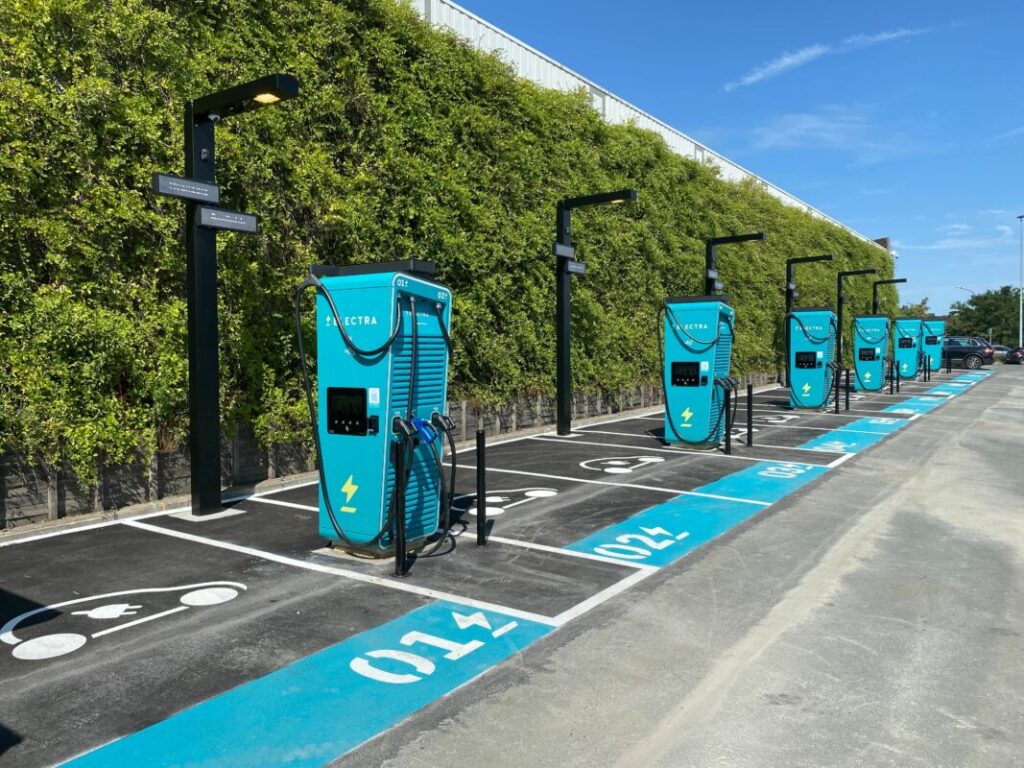With the energy transition and the massive adoption of electric vehicles, the management of charging stations is becoming crucial for hyper-growth companies like Electra. Faced with growing demand, Electra called on Cocoparks and its charging station monitoring solution to optimize their use, reduce incidents of squatting and suction vehicles, and analyze the types of vehicles using its infrastructures.
Who is Electra?
Electra is one of France’s leading scale-ups in charging stations for electric vehicles. The hyper-growth company, headed by Aurélien de Meaux, is aiming to install 8,000 charging stations across Europe. The company has raised over €200 million in funds and debt to support this extraordinary growth.
Context: Hypergrowth challenges for Electra
Electra, a major player in the field of charging stations for electric vehicles, is experiencing rapid growth. This expansion brings with it major challenges:
- Terminal management :
- As the number of bollards installed increases, monitoring and control become more complex.
- Inappropriate use :
- Incidents of squatting (vehicles parking unduly) and suction vehicles (occupying bollards for too long) disrupt access for legitimate users.
- Vehicle diversity :
- An in-depth understanding of the types of vehicles using the terminals is essential for adapting services and infrastructures.
The Solution: An Integrated Charging Station Control System
In response to these challenges, Electra has developed an innovative solution to help you manage the use of charging stations. Here’s how it works:
- Real-time usage monitoring :
- Each kiosk is equipped with a local artificial intelligence system to track usage in real time. These devices collect precise data on the duration of each charging session and detect any anomalies.
- Squat and suction vehicle management :
- In the event of misuse, such as squatting or suction vehicles, the system sends alerts to the operators. Measures can be taken quickly, such as sending notifications to the drivers concerned or applying penalties.
- Vehicle Typology Analysis :
- The solution collects information on the types of vehicles using the bollards (e.g. passenger cars, commercial vehicles, etc.). This analysis helps us to understand user needs and adapt infrastructures accordingly.
Impact of the Solution
The implementation of this charging station control solution has the potential to have significant impacts for Electra and its users:
- Optimizing the use of charging stations :
- Thanks to real-time monitoring, Electra can guarantee optimum use of the terminals. Incidents of squatting and suction vehicles can be reduced by 40%, improving terminal availability for legitimate users.
- Improving customer satisfaction:
- Users find available charging stations more easily, which improves their charging experience; including on the ELectra portal and tools such as chargemap.
- Usage data :
- Collecting and analyzing data on vehicle types enables Electra to adjust its development and investment strategies. For example, by adapting terminals to the specific needs of certain vehicle categories, Electra can better meet market demand.
- Terminal Operating Efficiency :
- Proactive terminal management reduces the cost of manual intervention and user complaints. Automated alerts enable fast, efficient response to problems.
- Contribution to the Energy Transition :
- By optimizing the use of charging stations, Electra contributes to the energy transition by making electric vehicle charging more accessible and reliable, encouraging more drivers to switch to electric.
Conclusion: mastering the use of bollards, a must-have
Electra’s deployment of a charging station control solution illustrates the impact and importance of technology in effectively managing infrastructures during periods of hypergrowth. By improving terminal availability, reducing inappropriate use and better understanding user needs, Electra is not only meeting today’s challenges, but also positioning itself as a leader in the energy transition.
